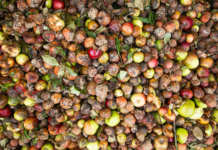Prime Minister Narendra Modi’s Rs 20 lakh crore plan for Atmanirbhar Bharat (self-reliant India) speaks of self-reliance. It was first mentioned on 12 May 2020 as ‘Atmanirbhar Bharat Abhiyan’ during the announcement of the Covid-19 related economic recovery package. To ensure self-sufficiency at the grass-root level, the government came out with measures to strengthen food processing, infrastructure logistics, capacity building, governance, and administrative reforms for the agriculture and fisheries sectors.
To highlight the impact of the several relief packages announced for the food industry, Fi India and Hi, along with Suman Food Consultants, organized a webinar on 18 June 2020. This webinar highlighted the need to convert challenges to opportunities in making the Indian food industry self-reliant.
What Atamnirbharta means for the food industry
Nitin Puri, senior president – Food and Agri Strategic Advisory & Research, Yes bank believes that we need to compete with the competitive by building world-class infrastructure. He explains, “Food processing is not the only way to add value and increase farmer’s income. Factors including right varieties, back-end skilling, lower pesticide residue, and quality also help make the right impact. Through various schemes, the government is doing the back-end value addition of sectors like dairy, fisheries, and others.”

Akshay Bector, chairman and director, Cremica Food, defined Atmanirbhar Bharat as an international player selling highly competitive goods. Anaam Sharma, senior manager – Corporate Affairs at Coca Cola India, called the prime minister’s plan apt for the moment. “In the long run, you have to be sustainable and work within communities. Feed the population, meet the consumer requirement, and enter the global supply chain, that is – Atmanirbharta.”
Excellence to drive dominance in the market
According to Bector, MNCs have added a considerable amount of value to the [Indian] eco-system. “Thirty years back, when Coca Cola entered India, we did not have good sugar in the country. Coca Cola worked with sugar mills and helped them raise their standards, and as a result, India is producing world-class sugar today.” He believes that collaborations with multinational companies bring management and technical know-how to the country while contributing to the economy.
Bector emphasizes the need to allow foreign competition in the quest for Atmanirbharta. He says, “The Government can develop a conducive atmosphere of Atamnirbhar Bharat for the development of businesses. There is a need to be welcoming.”
Puri adds, “Over time India has become competitive in the global arena. There is enough scope of adding value to reach the next level. However, every processing equipment can’t yet be sourced locally. At times, you might need to look overseas for technology, innovation, and excellence.”
Tejani also feels that technology-wise India is way behind, and foreign collaborations will help in development. The need for preprocessing infrastructure to carry the supply chain forward and the need for the right value chain were also highlights of the discussion.
Sharma clarified the understanding of vocal for local, “Atamnirbharta is a journey which has to traverse over time. The technology and the machines are imported to match quality, which can’t be achieved on locally available technology.”
Aggregating fresh and processed foods
Atmanirbharta on the supply chain is not enough; the source of funds (equity funds) have to be wisely utilized. Puri addressed the need to widen the scope to include the fresh produce sector. “The food processing sector can also bring about a revolution in the fresh produce space. There is a need to build infrastructure, educate about food safety, and traceability. Fresh produce export is a huge opportunity, and it can benefit from the collaboration of food processing with aggregators of fresh produce.”
Bector said, “The world is looking at the prolonged recession. There may not be quick opportunities at the moment, but in the long-term, there are plenty. We will see the shifting of the supply chain to India as it will become more visible.” He thinks that there is a need to bring more varieties for high-yield crops as well.
According to Puri, demand-side disruptions and consumers’ behavioral changes have happened for the better. “The focus on health and immunity will give birth to new categories, industries, and innovations in India.”
IndiFoodBev — authentic, impactful and influential
An English-language food and beverage processing and packaging industry B2B platform in print and web, IndiFoodBev is in its third year of publication. It is said that the Indian food and beverage industries represent approximately US$ 900 billion in revenues which implies more than 20% of the country’s GDP. Eliminating the wastage on the farmside can help to deliver more protein to a higher number of the population apart from generating sizable exports. The savings in soil, seeds, water, fertilizer, energy and ultimately food and nutrition could be the most immense contribution that country is poised to make to the moderation of climate change.
To improve your marketing and grow sales to the food and beverage processing and packaging industry, talk to us. Our research and consulting company IppStar [www.ippstar.org] can assess your potential and addressable markets in light of the competition. We can discuss marketing, communication, and sales strategies for market entry and growth.
Suppliers and service providers with a strategy and budget for targeted marketing can discuss using our hybrid print, web, video, and social media channels to create brand recognition linked to market relevance. Our technical writers are ready to meet you and your customers for content.
The second largest producer of fruit and vegetables in the world is continuously expanding processing capacities and delivery systems with appropriate innovative technologies. We cover product and consumer trends, nutrition, processing, research, equipment and packaging from farm to thali. Get our 2025 media kit and recalibrate your role in this dynamic market. Enhance your visibility and relevance to existing markets and turn potential customers into conversations. Ask for a sample copy of our bi-monthly in print or our weekly IndiFoodBev eZine each Wednesday.
For editorial info@ippgroup.in — for advertisement ads1@ippgroup.in and for subscriptions subscription@ippgroup.in
Naresh Khanna – 10 February 2025
Subscribe Now












I am a diploma holder in food processing and want launch a new food processing plant in mewat area of haryana state. Am I eligible for this scheme.